#Dino V6
Explore tagged Tumblr posts
Text







Fiat 130 Familiare, 1974. The third of the Agnelli cars to be offered at auction is one I have posted about before. The 130 was Fiat's flagship saloon of the late 60's and early 70's, it was powered by a 3.2 litre Ferrari-made Dino 60º V6. Gianni Agnelli commissioned coachbuilders Officina Introzzi to make a long-roof estate version for his family and kept the car for 11 years.
auction listing
#Fiat#Fiat 130#Fiat 130 Familiare#V6#station wagon#woody wagon#long roof#1974#1970s#Dino V6#one-off#flagship#coachbuilt#Officina Introzzi#family car
257 notes
·
View notes
Text

ferrari dino v6
#art#engine#automotive art#mecha#ferrari engine#ferrari#dino v6#digital art#artists on tumblr#made with blood sweat and tears
29 notes
·
View notes
Text

21 notes
·
View notes
Text

From August, 2023
#Ferrari 246 sport Dino#v6#vintage Ferrari#monterey car week#Leica m11#original photography on tumblr#august 2023
13 notes
·
View notes
Text
#scuderia Ferrari#Ferrari#Ferrari Dino#Fiat Dino#Lancia#Lancia V6#Fly Yellow#2.0 L V6; 72 degree bank angle#3.0 L V6; 72 deg#Nissan Maxima#All Aluminum V6#motorcycle#ford motor co#mo#moto#motor#motorious motorsports#motorious#motors#Vito Jano
2 notes
·
View notes
Text
The Dino 246 was the first automobile manufactured by Ferrari in high numbers. It is lauded by many for its intrinsic driving qualities and groundbreaking design. In 2004, Sports Car International placed the car at number six on its list of Top Sports Cars of the 1970s. Motor Trend Classic placed the 206/246 at number seven in their list of the 10 "Greatest Ferraris of all time".
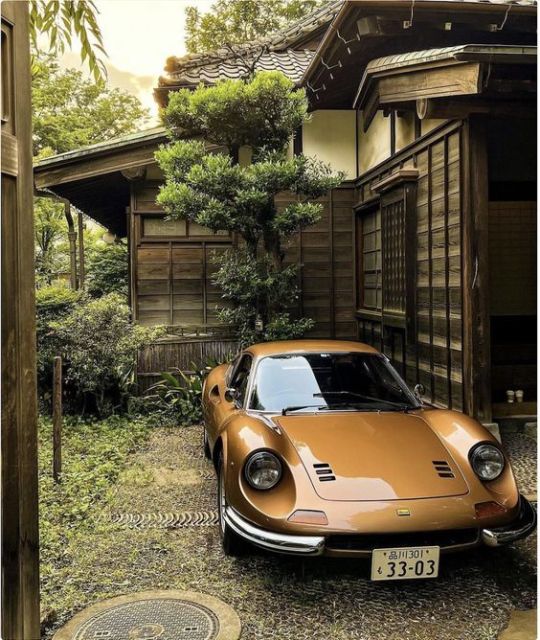
Dino 246 GT -fino.
967 notes
·
View notes
Text
Heartbreak in the 2.0 Sports Class at the 1966 24 Hours of Le Mans
Perhaps it's understandable given that we're coming off the Rolex 24 at Daytona, but I've been on a bit of an endurance kick lately, and I've come across a story that, while painfully, incredibly, niche, I actually found pretty fascinating. It's the heartbreaking story of a car that survived 24 fearsome hours of 1960s Le Mans...only to fail in the very last laps and miss out on the finish.
Our story takes us to the 1966 24 Hours of Le Mans, a race infamous for the battle between Ford's GT40 and Ferrari's 330 P3, however, there was another story brewing in the background: the rise of Porsche.
Ferrari had dominated the early 60s, Ford would take the late 60s with their GT40 winning four in a row, but in 1970, Porsche would breakthrough and take their first win at Le Mans before going on to become the dominant force of the 1980s.
For 1966 though, it was still early days for the Porsche project. Nevertheless, they already possessed some of the numbers that would make future Porsche efforts famous:
3 factory Porsche 906/6 LH "longtails" in the 2.0L Prototype class.
2 factory Porsche 906/6 Carrera coupes in the 2.0L Sports class.
1 privateer Porsche 906/6 Carrera coupe in the 2.0L Prototype class.
And a privateer 911S in the 2.0L GT class for good measure.
Wait a second...why so many different classes? Why do most of those cars seem to be the same model? Why is one Carrera 6 in the Prototype class while the other two are in the Sports class?
Well, the short answer is that old school Le Mans was complicated.
These days there's a clear distinction between classes: Hypercar is the fastest, LMP2 in the middle, and then GTs. Back then though, it was more of a chart - there were Prototypes, Sports Cars, and GT cars.
Prototypes were dedicated racing machines, Sports Cars, meanwhile, were a bit of an odd area, in that there was a 50-car homologation and these cars needed to have all the equipment necessary to be road legal (but as far as I can tell, there was no requirement to actually sell 50 road cars or anything, not yet at least). GT cars, meanwhile, were the actual sports cars for the road modified for racing use.
The other axis of the chart, meanwhile, is displacement. For 1966, there were 1.15L entries, 1.3L entries, 1.6L entries (though none showed up), 2.0L, and then we skipped all the way up to the 5.0L and the 5.0L+ classes.
In Porsche's case, all their cars were powered by a 1991cc Flat-6, meaning that they conformed to the 2.0L class in Prototype, Sports, and GT.
As for the 906, well, they produced the 50 906 Carrera 6s necessary for homologation, but for Le Mans, they brought the longtails. The 906/6 LH, with a monstrous rear overhang - I don't typically use pictures in these blogposts because of image rights, but look up a picture of it, it's hilarious - streamlined specifically for the mighty Mulsanne straight.
So, these 906/6 LHs were leading the charge, and they were up against a trio of Dino 206 prototypes - with Ferrari's 1986cc V6 - but our story focuses on the 906 Carrera 6s.
The #33 Porsche driven by American Peter Gregg and Swede Sten Axelsson, and the #58 driven by Germans Gunter Klass and Rolf Stommelen.
These were, quite literally, the only entries in the 2.0L Sports class. Ford had five GT Mk. 1s (in addition to their eight Prototype Mk. 2s and a sixth GT MK. 1 that didn't make the race) but those were in the 5.0L class, meaning that they weren't competing with Porsche.
Not that it mattered, considering that none of the Mk. 1s finished the race.
So yeah, quite literally two cars competing for the win, and they were strong too.
With the big cars falling away one by one, the Porsches were getting closer and closer to the front, and all five of the factory Porsche System Engineering entries were running in the top then. Thus, as Ford was planning their three-car photo finish for the overall win, Porsche was planning on a five-car photo finish just behind them.
Then...disaster struck.
Shortly after his last pitstop, Peter Gregg, then in seventh place, started experiencing an engine issue.
This must've been within the last hour of the race, probably forty-five to thirty minutes left, and the #33 car had completed a mighty 321 laps, but they were failing so close to the end of the race. In an attempt to make the finish, Peter Gregg parked the car in the pits and waited for the clock to tick down and the Fords to cross the line, figuring that he could at least nurse the car home for one final lap.
The #58 Porsche was still out there, making laps and taking the class lead as well as seventh place overall, but with the Germans on 330 laps and the next car on track being a Ferrari 275 GTB car in the 5.0L GT class on just 313 laps, Gregg could still finish in the top ten at Le Mans and be part of a five-car Porsche photo finish.
So, on the last lap, Peter Gregg tried to restart the car and complete one final lap...but it wouldn't turn over.
He missed the photo finish, and he missed the finish completely.
321 laps done, but he couldn't get it over the line to finish the race.
Thus, Porsche had to content themselves with a four car 4-5-6-7 finish, while Peter Gregg and Sten Axelsson earned the heartbreaking distinction of retiring of engine issues...24 hours into the race.
With none of the GT40 Mk. 1s making the finish and all three Dinos out early in the race, this means that the Klass/Stommelen car was the only Sports entry of any kind to finish the 1966 24 Hours of Le Mans.
So yeah, Peter Gregg and Sten Axelsson...they were on for a class win and a photo finish for Porsche, only to run into a heartbreaking engine issue at the very end of the race. From class lead and seventh overall to a DNF.
To add insult to injury...that one 911 did make the finish, completing 284 laps for a 14th place finish.
Less laps but...they finished the lap that counts: the last one.
17 notes
·
View notes
Text

Making a Monster - A Midjourney/Photoshop Tutorial
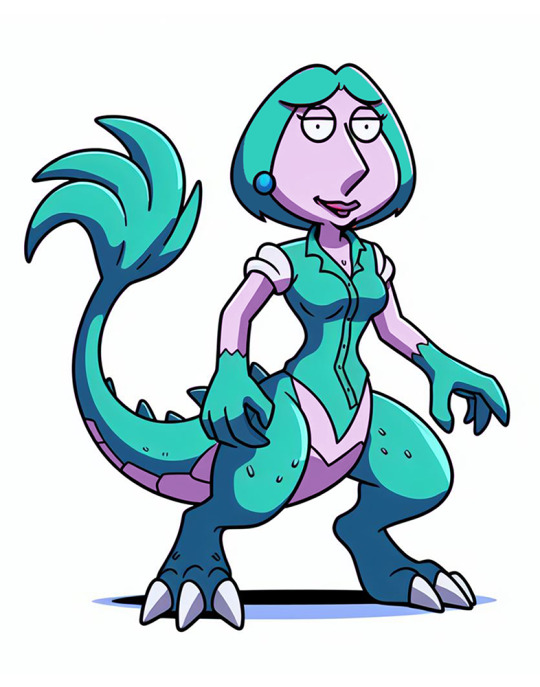

Today, I'm going to be breaking down how I use Midjourney for character design.
I've recently figured out what I want to do with my joust at the Poke/Digi/Rancher-of- Mon type concept. A lot will be coming from that soon, I don't have a name yet, but the mathematical formula is:
"oops, all Gardevoirs" multiplied by LadyDeviMon + the square root of MOTU over Bluth.
A couple of BioCritters are getting ported over to this new concept, specifically the Waifusaurus evolution branch:
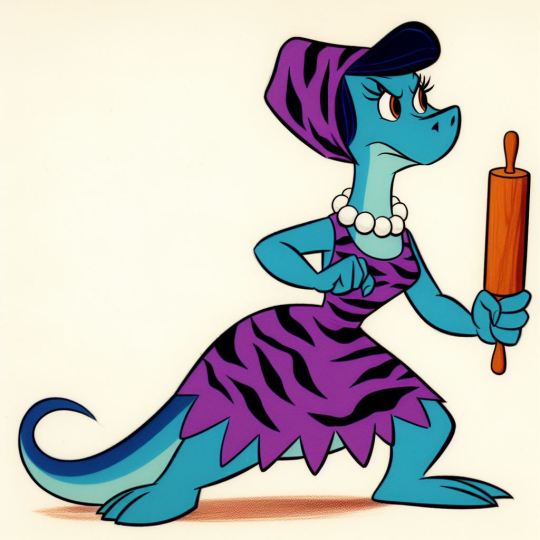

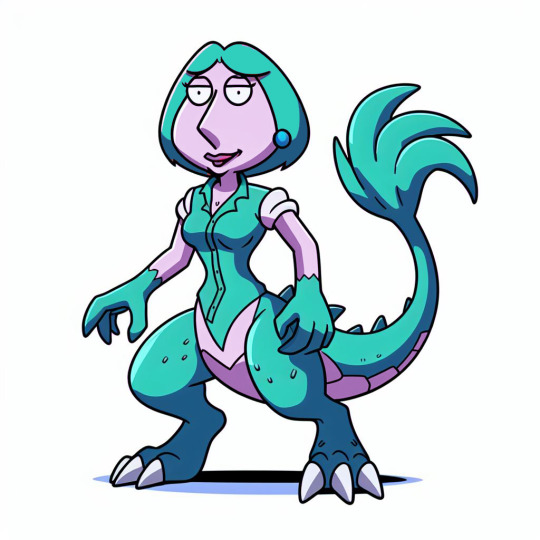
Which was itself a parody of pokemon that are essentially just ladies anyhow, so its probably more accurate to say Waifusaurus spawned unnamed LadyMon Project.
I made most of the first BioCritters in Dall-E3 through Bing Image creator, and Bing makes finding old prompts a pain, and while Straifu, the Lois Griffin parody form, is the subject of today's process, they followed the same prompt format I used with the Flintstones-inspired base Waifusaurus form:
vintage animation cell, a slender dinosaur-anthro housewife on flinstones, resembles humanoid dino the dinosaur, blue dinosaur-lady, purple tigerskin housedress, holding rolling-pin-made-of-rock 1963, in the style of 1960s hanna-barbera TV animation, character cel on white background, posed in a determined ready fighting stance
However, I have a specific look for this new project in mind, so its time to evolve the design.
Step one was to start with basic prompting. I built a new prompt that described what I wanted:
fullbody original production cel, white border all around, vintage animation cel, lavender humanoid woman-creature with large t-rex legs and tail, fan of feathers at the end, wearing teal button up blouse, bob haircut, clawed hands, lois griffin as a pokemon, female character design vintage cartoon screen capture (1993) by AKOM and TOEI , white background, beautiful variable-width black line art with cel shaded vintage cartoon color, painted backdrop, official media, UHQ 1996, official media, UHQ
I ran this in Niji 6, using the style moodboard I'd made for the purpose: --p m7298241701452185637 - largely a mix of full body character designs I'd generated in the style I wanted and 1980s animation model sheets. Moodboards are an expanded version of style prompting, which I outline here.

Examples from runs that produced nothing remotely like what I wanted. I could spend some time tinkering with the prompt to get closer but character prompting is right there, why not just load the original design in?
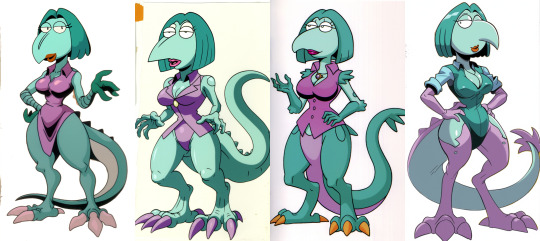
Yeah, Midjourney/NijiJourney cannot, as of v6, grok abstract cartoony art styles, and character reference always pulls at least a bit of art style as one of its limitations, so the general grotesqueness of its interpretations of these designs leak through.
Now, there's still several things I could do here. The easiest would be to take the straifu on the right and use a combination of in-painting and gradually swapping out the character prompt for a mix of "closer" options over a series of variations until it became something relatively close.
But around about now, I started getting ideas on how I wanted her to look. I liked the idea of a sort of "dinotaur", so I rendered up a regular rex, and combined it with one of the first-wave prompt-only failures and a recolored head in the style I was going for in photoshop.
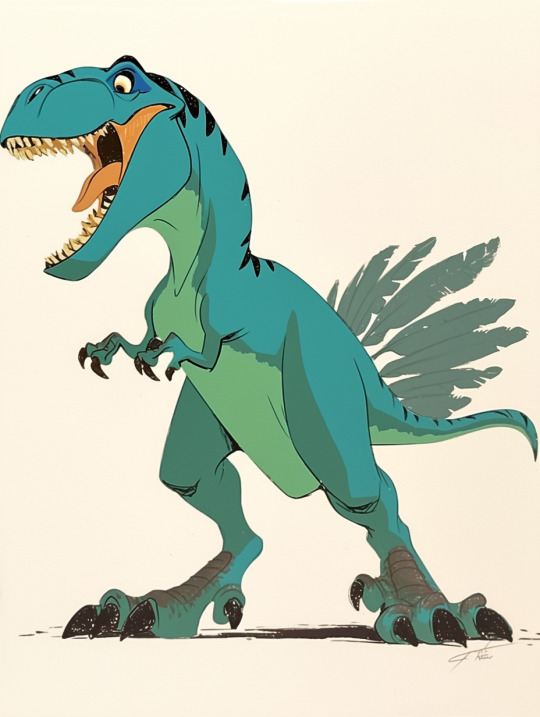

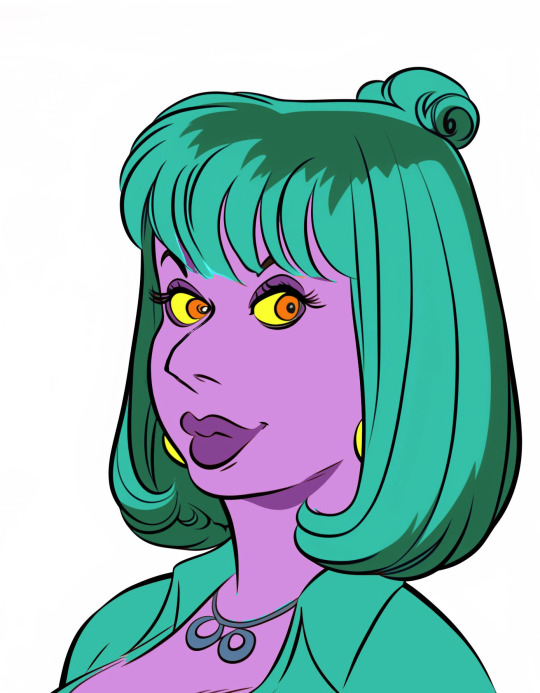
This was a Q&D mockup, only intended for prompting purposes.
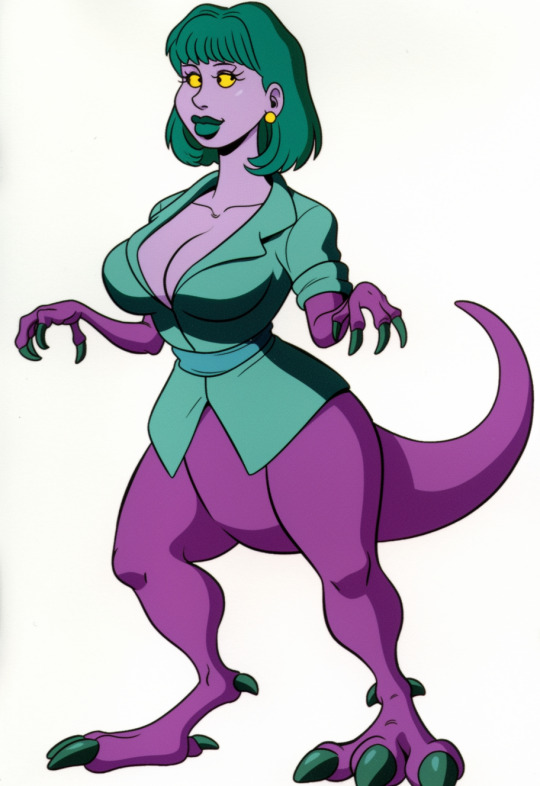


Using a combination of the mockups, the original design, and various results from their iteration-chain, I was able to get very close to the basic concept, only to run into two major issues: One, the huge lower body effect wasn't coming across as intentional (either disappearing into standard thicc-cartoon milfness or looking like AI screwups) and two: the design was boring when divorced from its bug-eyed cartoon aesthetics.
Now, you can do a lot with a flawed design, but a boring one means you need to start re-conceptualizing.
Which begins under the fold:
Straifu is a parody of Lois Griffin. In the broadest sense, that brings to mind the nasal voice, and in a battle-monster genre setting that means sonic attacks. Sonic + dinosaur means parasaurolophus to me.

Above, I mentioned I could have in-painted one of the cartoony results. I had actually done that, using the mockup face as a character prompt, and one of its results was interesting, so I started refining based on that:

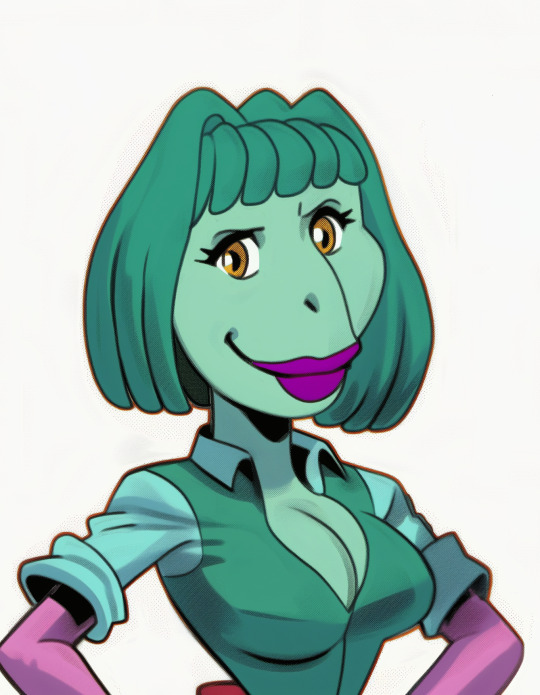
You can use edit to zoom in with Midjourney, it's just you can only do it horizontally or vertically in any given go. I zoomed in using this method, and redid her eyes in the process.
I did another mockup of her with a crest and in-painted, then iterated in the in-painting result.

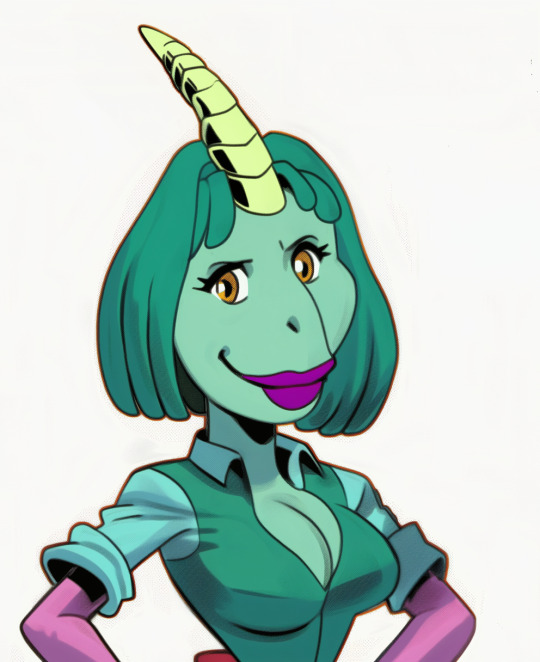

I did a lot of iterations at this stage, some as basic variations, some as full strong variations, but eventually by combining various results into the character prompt, I got the variation I liked best.


My initial thought was to restore the "beak" from those earlier versions but her duckbill face was too perfect to pass up.
I then attempted to get her a full body via outpainting.
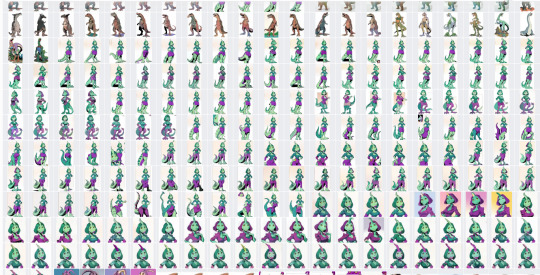

I didn't have much luck, once again the results were either too ai-fuckup-like or too basic.
The idea that came to me to solve the problem was to make her a full on parasaurolopus-taur, forelimbs and all. Midjourney wasn't going to cooperate on that, really weird designs aren't well understood by the current character reference.
Omnireference is supposed to fix that, but to paraphrase 'Oh Brother, Where Art Thou': Well ain't version 7 a temporal miracle? Two weeks from everywhen!
Now, it was time to do things the old fashioned way. With editing.
I went through a lot of attempts to make a base dinosaur:
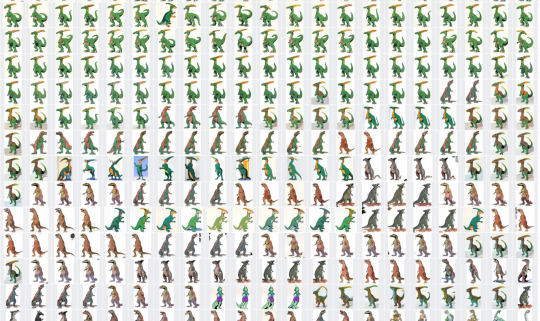
Eventually landing on this fellow, and this torso forming this rough-cut:

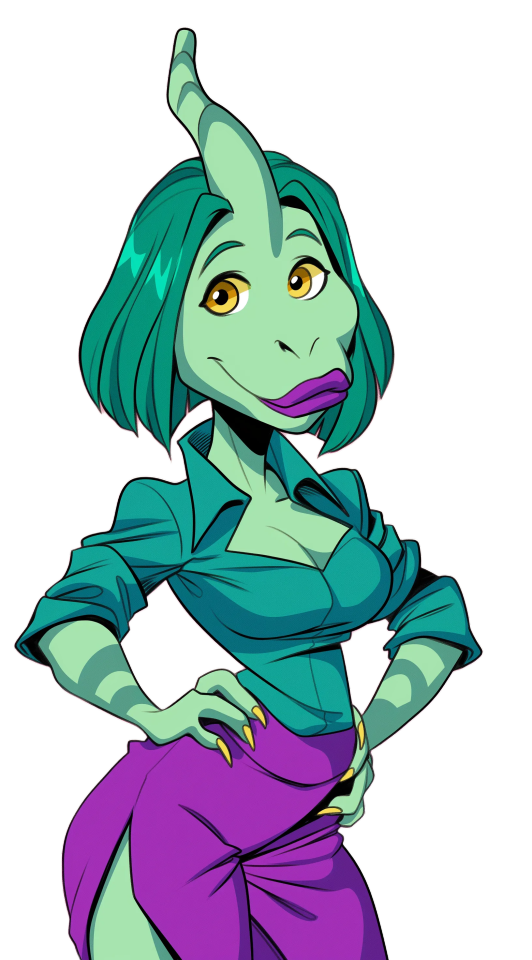

Now, there's one thing to note, the line quality on the two is completely different. Fixing that means getting at the lines.
The best way to do this in photoshop is by upscaling the image 200%, and using a fill bucket set to around 10-25% (anti-aliasing on) and white to make any dark colors gradually lighter so threshold can drop them to pure lines.
From there, I selected individual sections of thin lines and duplicated them, using a combination of 1 px strokes and nuding sections a pixel in any given direction to match the line width without it looking like a coloring book.
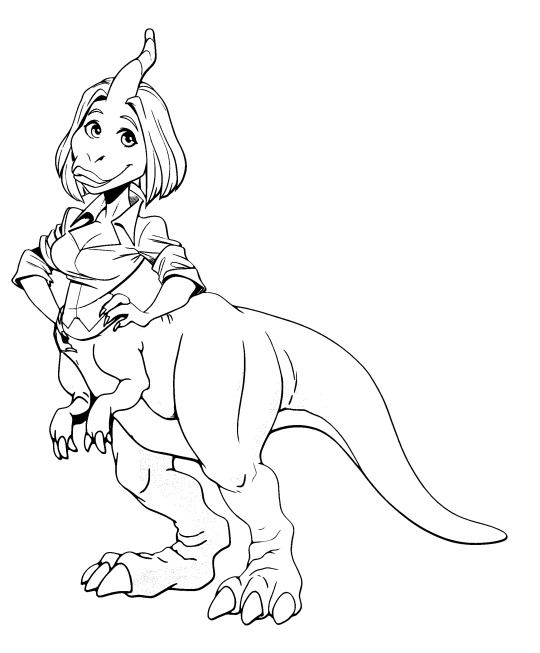
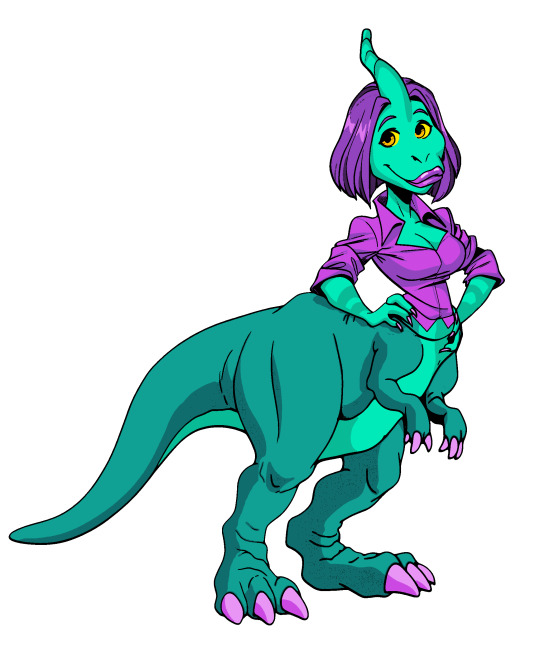
Which I then re-colored using your basic comic coloring process. I went with what is largely an inverse of the original colors because I already have a purple/lavender parasaurolophus character in DynoGuard.
Then, I started doing this tutorial, and realized one of the early versions shirt had formed a sort of plastron, and I went in and painted all that over on top.
I could go into more detail, but I'm out of images and this is already novel-length.
-
The gif at the start was made in Vidu, using the subject reference feature, the final image of Straifu, a background image, and this prompt:
a green creature with a purple shirt, she takes a deep breath and screams, the scream lasting 2 full seconds, Sakuga animation, eyecatch animation. Vintage traditional cel animation, TOEI, disney, don bluth, filmation productions, scene from Masters of the Universe (1983), ultra-high quality flawless animation sequence, Blu-Ray remaster. Every frame in focus and sharply detailed. Animated on 2s matte background painting.
#ai tutorial#midjourney#midjourney v6#nijijourney#character design#dinosaur#dinosaur-anthro#fakemon#waifu#lois griffin#family guy#parody#dinosaurs#parasaurolophus#vidu#vidu CCP#vidu AI#ai art#ai assisted art#multimedia art#art tutorial#photoshop#long post#do you like the color of the AI
11 notes
·
View notes
Text
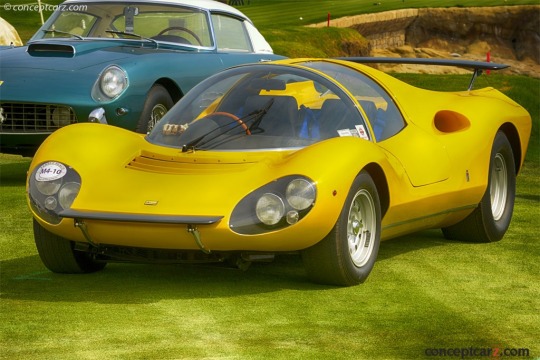
1967 Ferrari Dino 206 Competizione Competition Berlinetta
Alfredo 'Dino' Ferrari was credited with the design of the Ferrari V6 engine. With help from the legendary engineer Vittorio Jano, Dino influenced Enzo Ferrari's decision to produce racing cars in the 1950s powered by V6 and V8 engines.
Enzo Ferrari was hesitant to adapt the mid-engine layout for his customer cars, fearing they might be unsafe. He eventually relented and Sergio Pininfarina was tasked with designing a mid-engined concept for the 1965 Paris Motor Show, but demanded that it wear the Dino badge alone. At the Turin car show in 1966, the Dino 203S was well receipted and production soon followed.
The production Dino 206GT had many updates, modifications and changes such as softer edges and curving lines typical of earlier Italian cars. The 2-liter all-aluminum engine was transversely-mounted mid-ship and offered 160 horsepower. The V-6 engine featured dual overhead camshafts and 9.7:1 compression ratio. The crankshaft featured four main bearings with induction via three Weber 40 DCN/4 2-barrel carburetors. The frame of the 206GT was made from lightweight aluminum and fitted with full independent suspension. Disc brakes could be found at all four corners. The wheelbase of the car measured a short 90-inches. Top speed was a very impressive 146 mph. In total, there were only 152 examples built during 1968 and 1969.
This unique prototype followed the Dino 206 racing cars that raced at Le Mans and were powered by the Dino V6 engine. First seen at a 1966 Ferrari press conference, the standard 206 was bodied at Piero Drogo's Carrozzeria and featured light alloy bodywork and a semi-monocoque chassis. Only 18 were built, so the model was restricted to the Group 6 prototype class. This one-off 206 chassis, built by Ferrari, then went to Pininfarina to receive a new custom body. The plan was to use race-car engineering in a road-going supercar; it used an engine from one of three Dinos that raced at Le Mans in 1966. Designed by Paolo Martin, the car was shown at the 1967 Frankfurt Auto Show as a 'Dino' Berlinetta Prototype Competition, to much acclaim. Pininfarina preserved the car in their private museum until 2006, when they offered the current owner the opportunity to purchase the car and become its first owner.
#Ferrari Dino 206 Competizione Competition Berlinetta#car#cars#Ferrari Dino 206#berlinetta#ferrari dino#dino#ferrari
30 notes
·
View notes
Text




La Ferrari Dino 246 GTS. Le véhicule est nommé en l'honneur du fils aîné d'Enzo Ferrari, Dino Ferrari décédé en 1956 à l'âge de 24 ans mort dû à sa maladie. Fondateur en 1947 de la firme automobile Ferrari S.p.A., Enzo Ferrari décidera en hommage de son fils disparu prématurément, il créera cette voiture qui sera produite de 1969 à 1974 et en 3 761 exemplaires, elle sera dessinée dans l'esprit de la Porsche 911. Toutefois, à la base, cette voiture est conçue à cause de l'agacement d'Enzo Ferrari envers le succès commercial des Porsches 911 qui crée de l'ombre à sa gamme de véhicules V12. Elle sera la première voiture Ferrari ayant un moteur central, mais aussi une propulsion lui donnant une tenue de route exemplaire pour l'époque. Son moteur est un V6 de 195 ch, mais restera assez fragile et pointu, à cause, des premières versions à bloc aluminium qui sera remplacé plus tard par des versions à bloc en fonte. Ce moteur sera travaillé par les ingénieurs de Ferrari : Vittorio Jano, Franco Rocchi, Carlo Chiti, mais aussi par Dino Ferrari, donnant ainsi une partie du nom en son honneur à la marque et la voiture.
Constructeur automobile italien et filiale de Ferrari, Dino sera créé par Enzo Ferrari (1898-1988) en souvenir et pour faire hommage à son fils Dino Ferrari (1932-1956). Ainsi, cette firme sera créée dans le but de concevoir et fabriquer une gamme de voitures GT de prestiges et de voitures de course possédant les moteurs V6 Dino et V8 Dino entre 1965 et 1976. Dino Ferrari disparaître précocement en 1956 à l'âge de 24 ans seulement. Ainsi à titre posthume et dans une démarche de mémoire et d'honneur nevers son fils, Enzo baptisera tout les moteurs V6 de sa production les "Dino" et créera cette marque en parralèle des modèles Ferra à moteur V12. Il y aura aussi l'Autodromo Enzo e Dino Ferrari (aussi connu comme le Circuit d'Imola).
Alfredo Ferrari, connu sous le surnom de Dino Ferrari, naîtra lui en 1932 à Modène. Il sera ainsi un ingénieur italien, mais aussi le fils héritié d'Enzo Ferrari. Il suivra dans un premier temps une formation en finance puis fera une formation d'ingénierie mécanique en Suisse. Peut avant sa mort, il travaillera à l'Usine de Maranello avec son père en participant notamment aux conceptions des moteurs Ferrari de l'époque (V12 Colombo en 1947 ; V12 Lapredi en 1950 et V12 Jano en 1956) en particulier sur le moteur V6 "Dino" de 1958 qu'il ne verra jamais fini et mis dans un véhicule.
Source des images : https://frenchcurious.tumblr.com/archive
5 notes
·
View notes
Text
1969 Ferrari Dino 246 GT 🇮🇹
Engine: V6 / 2419cc / 192 HP
Top speed: 235 km/h (146 mph)
16 notes
·
View notes
Text





Fiat 130 Berlina, 1969. Launched at the 39th Geneva Motor Show, the 130 saloon used a 2.8 litre Ferrari-built Dino 60° V6 (later enlarged to 3.2 litres). It was designed in house at Fiat under their head of design Gian Paolo Boano and was the largest, most luxurious Fiat of the modern era. It was not directly replaced when production ended in 1976 after about 15,000 cars had been built. Fiat never again marketed a large luxury car.
#Fiat#Fiat 130#1969#Geneva Motor Show#39th Geneva Motor Show#Gian Paolo Boano#luxury car#V6#Dino V6#end of the line#3 box
154 notes
·
View notes
Text
Preservation class: 1967 Fiat Dino Spider 2000
For classic car aficionados, the 1967 Fiat Dino 2000 Spider represents a blend of Italian artistry and Ferrari engineering. This particular model is a rare survivor, off the road since 1990. The Fiat Dino was born from a collaboration between Fiat and Ferrari, driven by the need to homologate Ferrari’s V6 engine for Formula 2 racing. Introduced at the Turin Motor Show in 1966, the Fiat Dino…
4 notes
·
View notes
Text
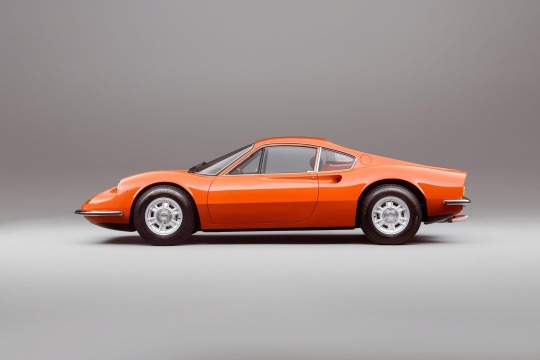
Disclosing Auto News:
This is a Dino 246. Not a Ferrari, a Dino! In the late sixties, Ferrari was struggling a bit and decided to get as close to "mass production" as it could in order to save the company. Because it was to be a profit making venture Enzo Ferrari insisted on using proprietary parts, some Fiat parts and it was not to be called a "Ferrari". It was a sort of cut price car, but wash your mouth out saying that today. The first was released in 1967 and was powered by a 2.0 litre V6 engine and was called the Dino 206. It was a big seller in the US but there was a request for "more performance please", so engine capacity was increased to 2.4 litre — 246 — and the wheelbase increased by 60mm.
The 246 continued in production in various guises until 1974 when it was discontinued even though demand was still strong.
Only in the very last of them did Enzo weaken and allow the car to be called a Ferrari — although, restrospectively, they are today all called Ferraris and all possibly have had Ferrari badges retrofitted — but for most of their production life they were simply "Dino".
Good looking? Most people go weak at the knees at first glimpse of a Dino — it certainly is voluptuous, like Marilyn Monroe's bosoms.
I am going to carry on this conversation in the next issue of Classic Driver, but have your say here on what you think of the Dino.
0 notes
Text
Ferrari's 2024 Finali Mondiali on the Mugello Circuit

A single-make auto racing championship, the Finali Mondiali marks the final stages of the Ferrari Challenge. The 2024 Finali Mondiali on the Mugello Circuit will occur from October 16 to October 20 at the Autodromo Internazionale Enzo e Dino Ferrari in the Bologna suburb of Imola, Italy. Curated by the renowned German racing circuit architect Hermann Tilke, its complicated curves and off-cuts have earned this track a widespread reputation for technical difficulty. The Finali Mondiali first took place on this track in 1998.
Beyond its high level of competition on a notable track, the 2024 Finali Mondiali on the Mugello Circuit is drawing excitement as the racing debut event of the Ferrari 296 Challenge. It has a V6, 120-degree turbo, dry sump engine, advanced aerodynamics, and a redesigned braking system. Ferrari first revealed this new model at the 2023 Finali Mondiali, making it the ninth model the company created in the event's history.
0 notes